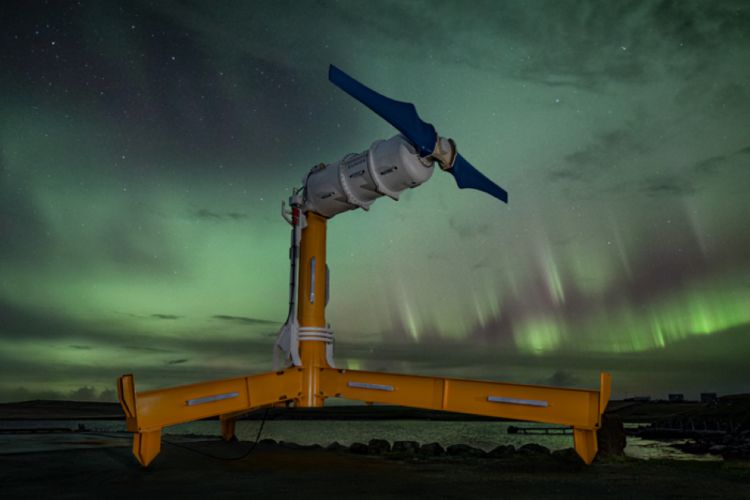
Scientists across the UK said ocean tidal streams can be exploited to provide a predictable and reliable means of energy, adding that this vision requires government funding to accelerate innovation and drive down costs.
“This is an extensive review on the state-of-the-art and opportunities for tidal stream energy,” said Professor Philipp Thies of Exeter University. “There are still engineering challenges ahead, but this source of low carbon energy is technically feasible and an important element of future net zero energy generation.”
Previous access to government funding has helped install 18MW of tidal stream capacity, which is around 500 times less than the UK’s current offshore wind capacity. According to the researchers, this relatively modest funding support to date has put the tidal stream sector on a steep cost reduction trajectory which has slowed since access to funding has been removed. Extending such support is essential to enable it to become cost-competitive with gas turbines, biomass, and nuclear.
The study - published in Royal Society Proceedings A and led by Plymouth University - also explored the potential environmental effects of such future developments and found no evidence to suggest that the next phase of tidal stream development will cause significant detrimental environmental impact.
Dr Danny Coles, Research Fellow at Plymouth University and the study’s lead author, said: “Our study shows there is considerable evidence to support an estimate that the UK and British Channel Islands’ tidal stream energy resource can provide 11 per cent of our current annual electricity demand.
“Achieving this would require around 11.5GW of tidal stream turbine capacity to be installed, and we currently stand at just 18MW. It took the UK offshore wind industry approximately 20 years to reach 11.5GW of installed capacity. If tidal stream power is going to contribute to the net zero transition, time is of the essence.”
The regions with the highest tidal stream resource are the Pentland Firth and Orkney Waters, Scotland, and the Channel Islands – but both would require major grid infrastructure to connect them to high demand centres. In tandem, other sites could be more easily developed on the south coast of England and in the Bristol Channel, as they are in closer proximity to existing grid infrastructure.
The UK government recently identified the grid integration of variable generation as a key challenge as renewable power penetration increases. This new research finds that the cyclic, predictable nature of the tides can provide grid benefits over alternative variable power technologies such as wind, including supply-demand matching.
The UK government has already committed to a net zero greenhouse gas emissions target by 2050 and in 2017 almost 30 per cent of the UK’s electricity was generated through renewable technologies. Electricity demand is expected to more than double by 2050 and a diverse generation technology mix will be needed to ‘keep the lights on’.
Co-author Professor Beth Scott, of Aberdeen University, said: “This paper provides such an important and timely message for the world, and especially the UK government, to fully understand the strategic use of predictable tidal stream energy. At the moment the UK is leading the world in both the technological and environmental research aspects of tidal stream energy developments and supporting that lead now will rapidly increase the UK’s goal of sustainable net-zero energy production.”




Project to investigate hybrid approach to titanium manufacturing
What is this a hybrid of? Superplastic forming tends to be performed slowly as otherwise the behaviour is the hot creep that typifies hot...